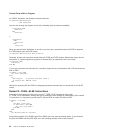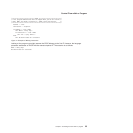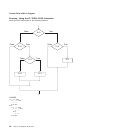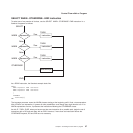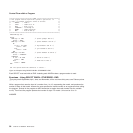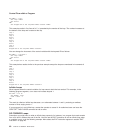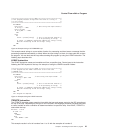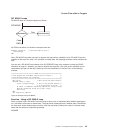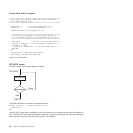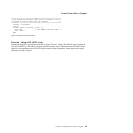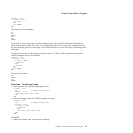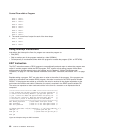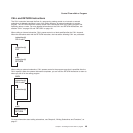Number 1
Number 2
Number 3
Number 4
Number 5
Number 6
Number 7
Number 9
Number 10
Exercises - Using Loops
1. What are the results of the following loops?
a.
DO digit=1TO3
SAY digit
END
SAY 'Digit is now' digit
b. DO count = 10 BY -2 TO 6
SAY count
END
SAY 'Count is now' count
c. DO index = 10 TO 8
SAY 'Hup! Hup! Hup!'
END
SAY 'Index is now' index
2. Sometimes an infinite loop can occur when input to end the loop does not match what is expected. For
instance, in the example of using the LEAVE Instruction on page 41, what happens when the input is
Quit and a PARSE PULL instruction replaces the PULL instruction?
PARSE PULL file_name
ANSWERS
1. The results of the repetitive loops are as follows:
a. 1
2
3
Digit is now 4
b. 10
8
6
Count is now 4
c. Index is now 10
2. The program would be unable to leave the loop because Quit is not equal to QUIT. In this case,
omitting the PARSE keyword is preferred because regardless of whether the input is quit, QUIT,or
Quit, the language processor translates the input to uppercase before comparing it to QUIT.
Conditional Loops
There are two types of conditional loops, DO WHILE and DO UNTIL. One or more expressions control
both types of loops. However, DO WHILE loops test the expression before the loop executes the first time
and repeat only when the expression is true. DO UNTIL loops test the expression after the loop executes
at least once and repeat only when the expression is false.
Control Flow within a Program
42
CICS TS for VSE/ESA: REXX Guide



